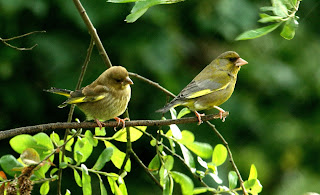Given the awfully wet June and early July, it's no surprise that summer migrants such as the Swift are literally 'under the weather' in their search for aerial insect prey.
 |
| Swift over Tacumshin lake (c.OOS) |
I am still noticing small parties of low flying, breeding birds, screaming round the streets of Wicklow, Redcross, Rathnew and Rathdrum, to name four locations.
 |
| Swift feeding (c.OOS) |
Swifts can cover relatively long distances in a day, 300km or more, not entirely surprising, given their superb shape,designed for life on the wing: these birds don't touch the ground: they mate on the wing and only land to nest under eaves of old buildings.
 |
| Swift at speed (c.OOS) |
We often notice feeding parties of birds, ranging over the Murrough Wetlands, along the Wicklow coast, typically up to a few hundred birds availing of the rich insect life over the wetland habitats.
Even more remarkable though are the reports of 1,000 or more birds feeding over Tacumshin Lake, County Wexford. This shallow freshwater lagoon is extensive, running to about 460 hectares and was formed behind a sandy ridge of dunes along the south Wexford coast. Swifts have been present in great numbers since early July. They appear to be adult birds; the thinking is they may have cut short their plans for breeding this season and instead are taking the opportunity to exploit the rich feeding over the lakebed.
Where these birds have come from is open to opinion.. The weather in the west of England and Wales has been very poor, perhaps they have taken the journey across the Irish Sea, or maybe they are birds ranging down from urban areas such as Dublin or Belfast on the Irish east coast?
Whatever the origin of the Wexford flock, make sure to enjoy the sight and sounds of Swifts, and let me know of any more concentrations or indeed absence of birds.. They will begin their journey south to The Congo over the next couple of weeks, our shortest stayer, and no wonder!
 |
| A superb flying machine (c.OOS) |









